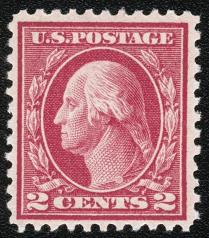
The "Washington/Franklin" series of United States postage stamps of 1908-1922, also known as the "Third Bureau Issues", are perhaps the most difficult US stamps to identify. In addition to new techniques for printing (i.e. rotary press, offset) and ways of offering stamps to the public (coil stamps) a new watermark (single-line USPS) was used for the first time. Additionally, an odd type of paper, known as "bluish" paper, was used for a brief period in 1909.
There are four major elements that need to be understood to conclusively identify Washington Franklin stamps:
Washington Franklin stamps come in five different designs:

Coil stamps were designed for use in dispensers and vending machines that could supply stamps one at a time. The first Washington/Franklin coils were issued in 1908, in strips of 100 that were perforated either 12 horizontally or 12 vertically. See image below.
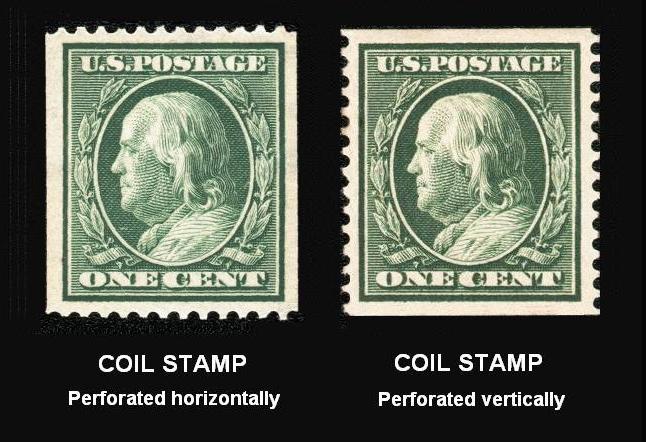
Washington/Franklins were printed on paper that was marked with single line watermark (190), double line watermark (191), or unwatermarked.
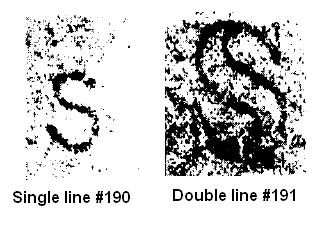
Intaglio printing, also known as "recess printing", is done from a plate that has lines etched or carved into it. When ink is applied to the plate, it collects in these lines and grooves, then after the surface of the plate is wiped clean it is run through a press under pressure. The pressure forces the ink from the grooves in the plate onto the paper, which form tiny ridges that, when dry, can be felt with a fingernail drawn lightly across them. A flat plate press, as its name suggests, utilizes a flat printing plate that is run through a press, then re-inked, wiped, and run through the press again. A rotary press utilizes a printing plate that has been formed into a cylinder, which allows for faster feeding of the printing sheets through the press—the plate is inked, wiped and impressed into the paper in one continuous action. Because a rotary press plate has been rounded, the image will be somewhat distorted. For stamps this means that the design will be slightly higher or wider than it would have been on a flat plate press. Also, the difficulty inherent in inking and wiping a rotary press plate while it was in motion meant that early rotary press stamps usually show a considerable amount of "plate tone", a sheen of ink that would transfer from the incompletely cleaned plate onto the stamp. See illustration below.
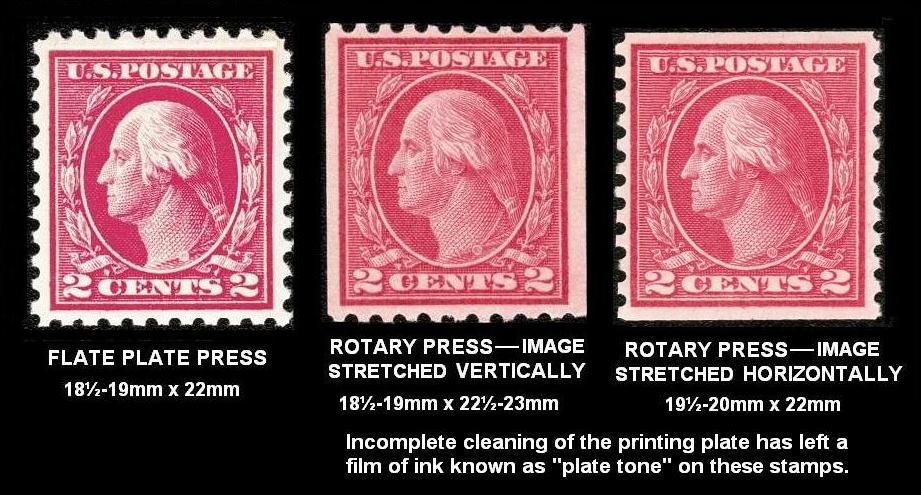
Offset printing is a fast, reliable and efficient method for printing. It was first used for printing stamps during the World War I as a cost-cutting measure, however the stamps, which lacked the fine detail of intaglio printed stamps, were unpopular with the public, who considered them ugly and cheap-looking. The use of offset presses to print stamps was discontinued in 1919, although offset was later re-introduced for printing stamps with marked success.
The image of an offset-printed Washington stamp is coarser and less detailed than an intaglio (i.e., flat or rotary press) printed stamp. Also, the ink lies flat on the surface of an offset printed stamp, while intaglio printing leaves a fine ridge of ink on the paper. In addition, some of the colors in the offset Washingtons are sharp and even garish. See below for general characteristics of offset printed stamps.
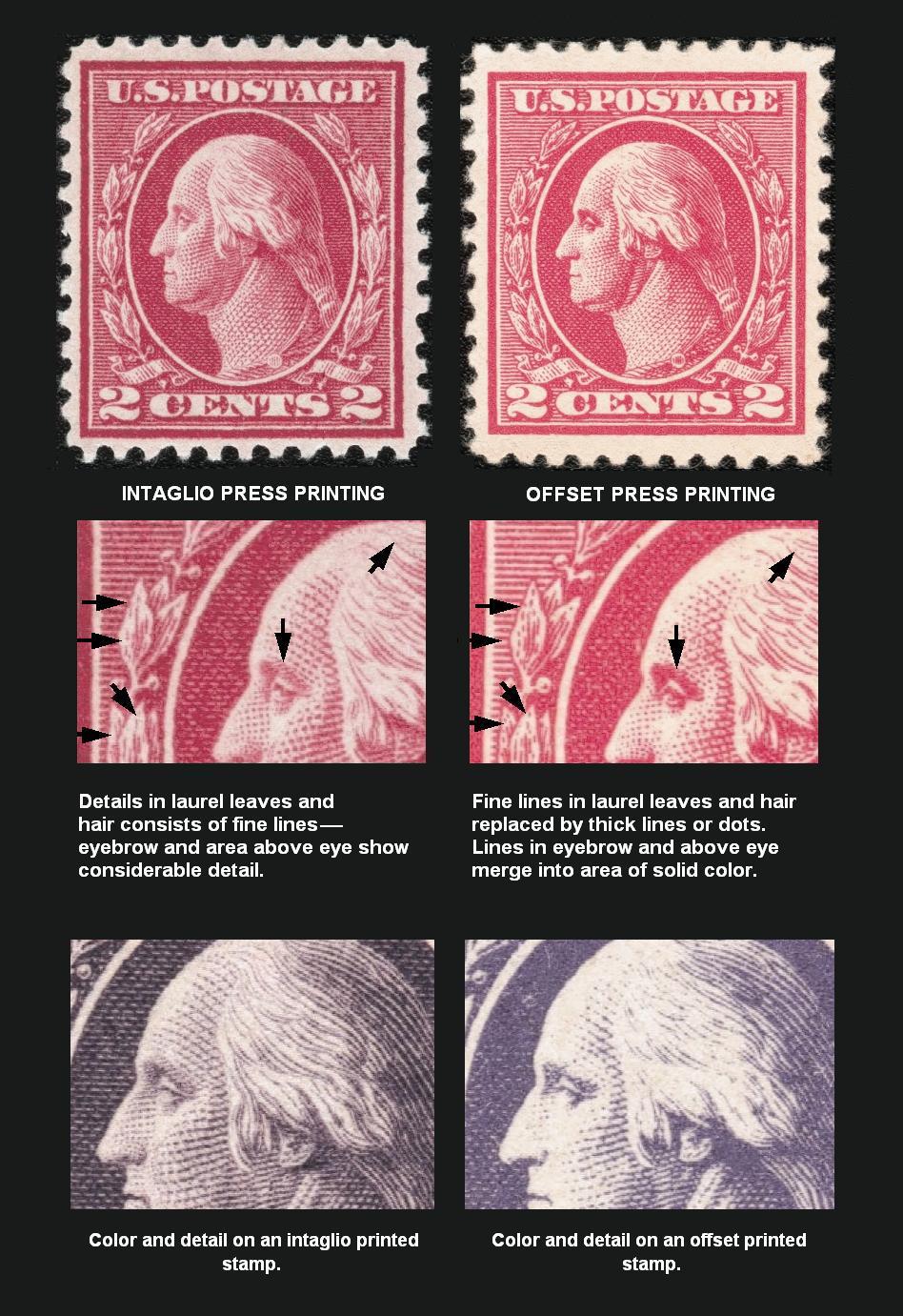
For a short period in 1909, some US stamps were printed on paper that had a 35% rag content rather than 100% wood pulp as usual, giving the paper a somewhat grayish hue. These are known as "bluish" paper stamps, and can best be distinguished by comparing the backs of the stamps against those of known 100% wood-pulp content. See comparison below. These stamps were printed in 10 denominations: 1 cent, 2 cents, 3 cents, 4 cents, 5 cents, 6 cents, 8 cents, 10 cents, 13 cents and 15 cents. All are uncommon to very rare. Stamps were only issued in Washington DC, so any used specimens must bear contemporaneous Washington DC cancels.
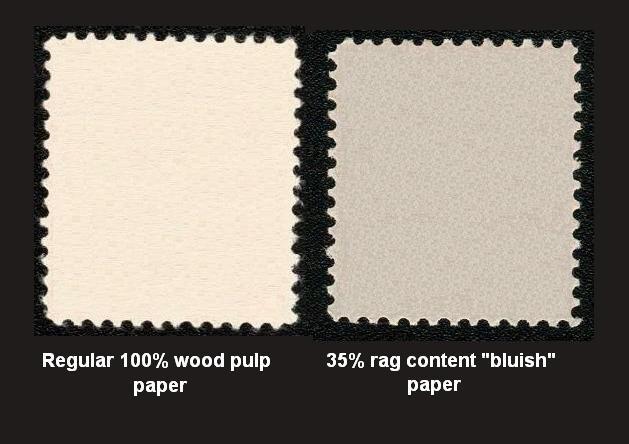
Several minor variations in the design of the A140 2 cent Washington stamp exist, and they have been given Roman numerals to distinguish them. The best website I have ever seen about these types is run by 1847usa.com (© 2002-2005 All rights reserved). Click on the thumbnails below to go right to the webpage that deals with the stamp you are trying to identify.
You may want to check out 1847usa.com's entire website, which can be found here, for a treasure trove of information on stamps of the United States. They also have a wealth of philatelic literature for sale here.
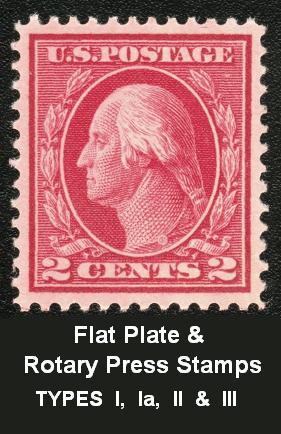
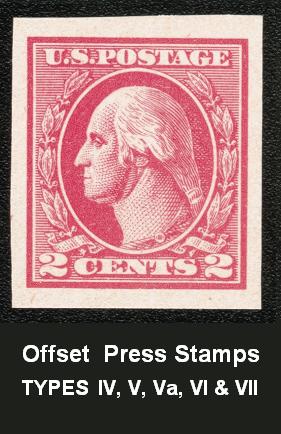
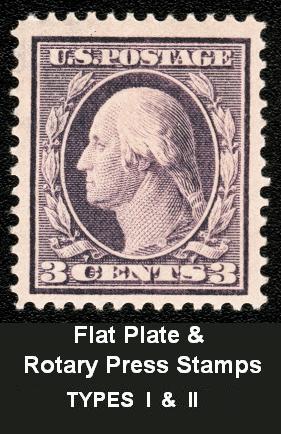
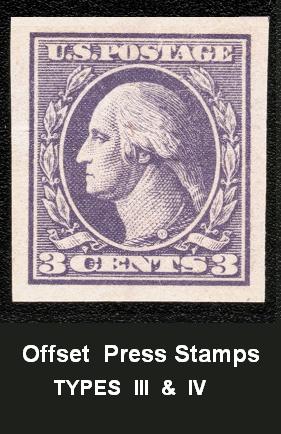
Press Type |
Water mark |
Design |
Size of Image |
Paper Type |
IMPERF |
PERF 12.5 |
PERF 12 |
PERF 12x10 |
PERF 10x12 |
PERF 11 |
PERF 10 |
PERF 11x10 |
PERF 10x11 |
COIL HORIZ. PERF 12 |
COIL HORIZ. PERF 10 |
COIL HORIZ. PERF 8.5 |
COIL VERT. PERF 12 |
COIL VERT. PERF 10 |
COIL VERT. PERF 8.5 |
| Flat Plate |
None | — | — | — | 481-485 | 498-518 523-524 547 |
462-478 | ||||||||||||
| " | Single line |
A138 A139 |
— | — | 383-384 | 374-375 | 385-386 | 390-391 | 387-388 | 392-393 | |||||||||
| " | " | A140 | — | — | 408-409 | 376-382 405-407 |
423A-C | 423D | 461 | 424-430 | 441-442 | 410-411 | 389 | 443-447 | 394-396 412-413 |
||||
| " | " | A148 | — | — | 414-421 | 431-440 | |||||||||||||
| " | Double line |
— | — | wood pulp |
343-347 | 331-342 422-423 |
519 | 460 | 348-351 | 352-356 | |||||||||
| " | " | — | — | bluish | 357-366 | ||||||||||||||
| Rotary | None | — | — | — | 544 | 543 | 538-541 | 542 | 486-489 | 490-497 | |||||||||
| " | " | — | 19½-20mm X 22mm |
— | 545-546 | ||||||||||||||
| " | Single line |
— | — | — | 459 | 448-450 | 452-458 | ||||||||||||
| Offset | None | — | — | — | 531-535 | 536 | 525-530 |
Here are a few examples of how to use the table.
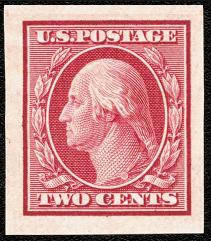
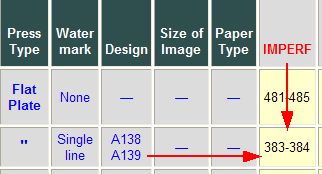
Another example—
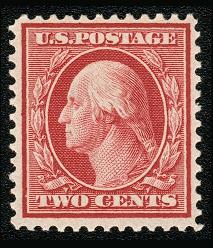
Another example—
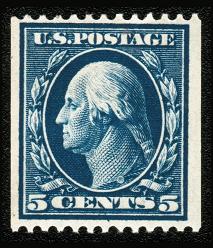
Another example—
